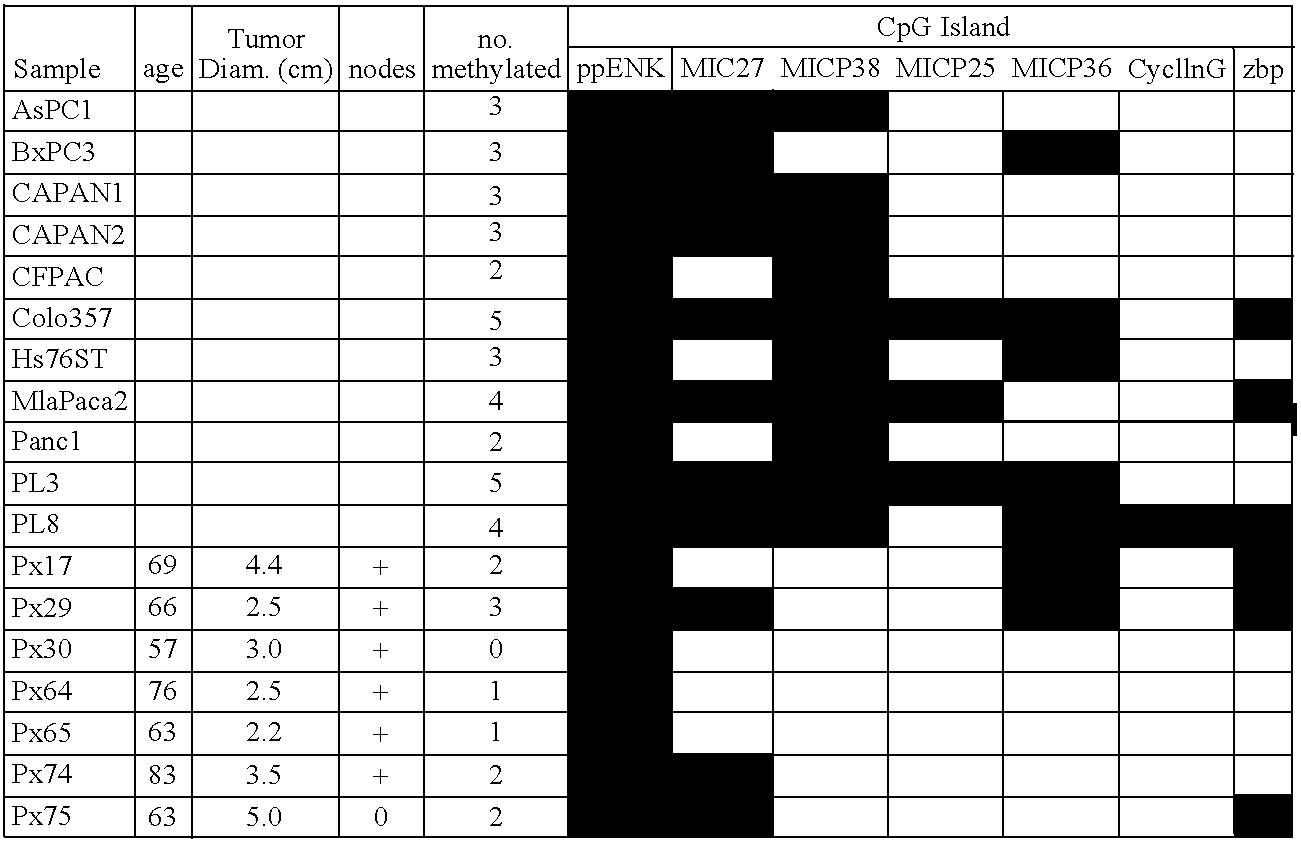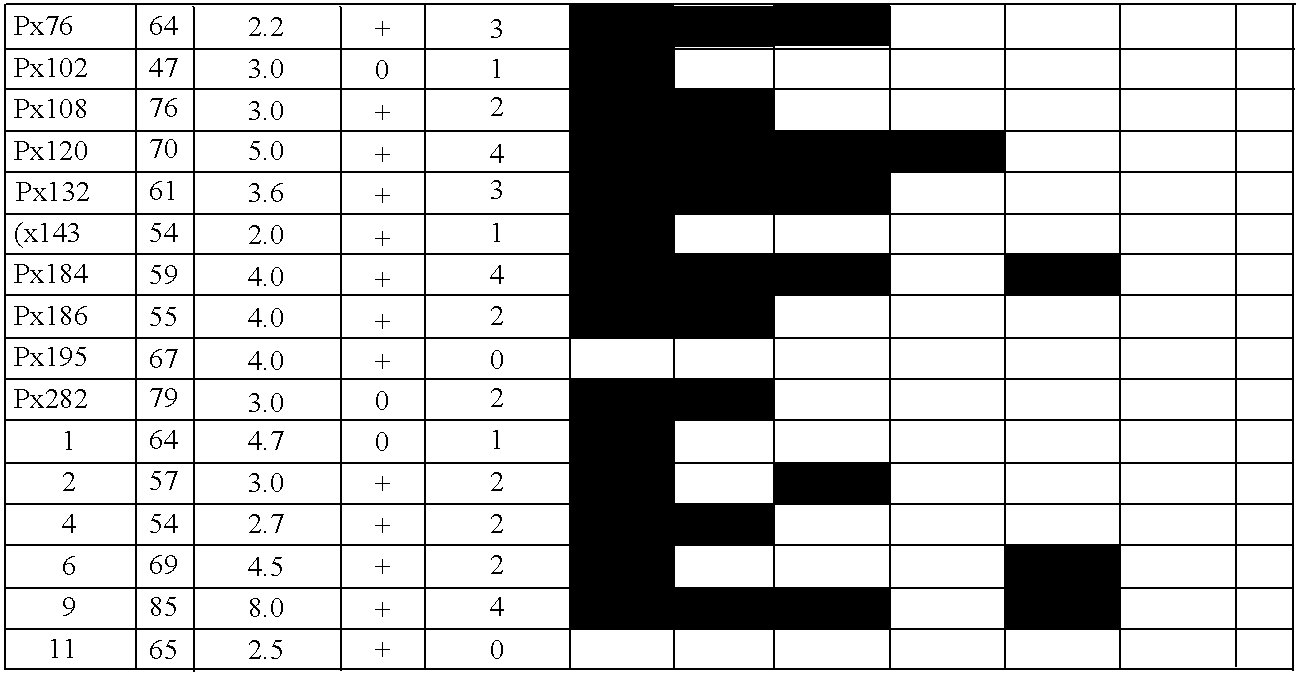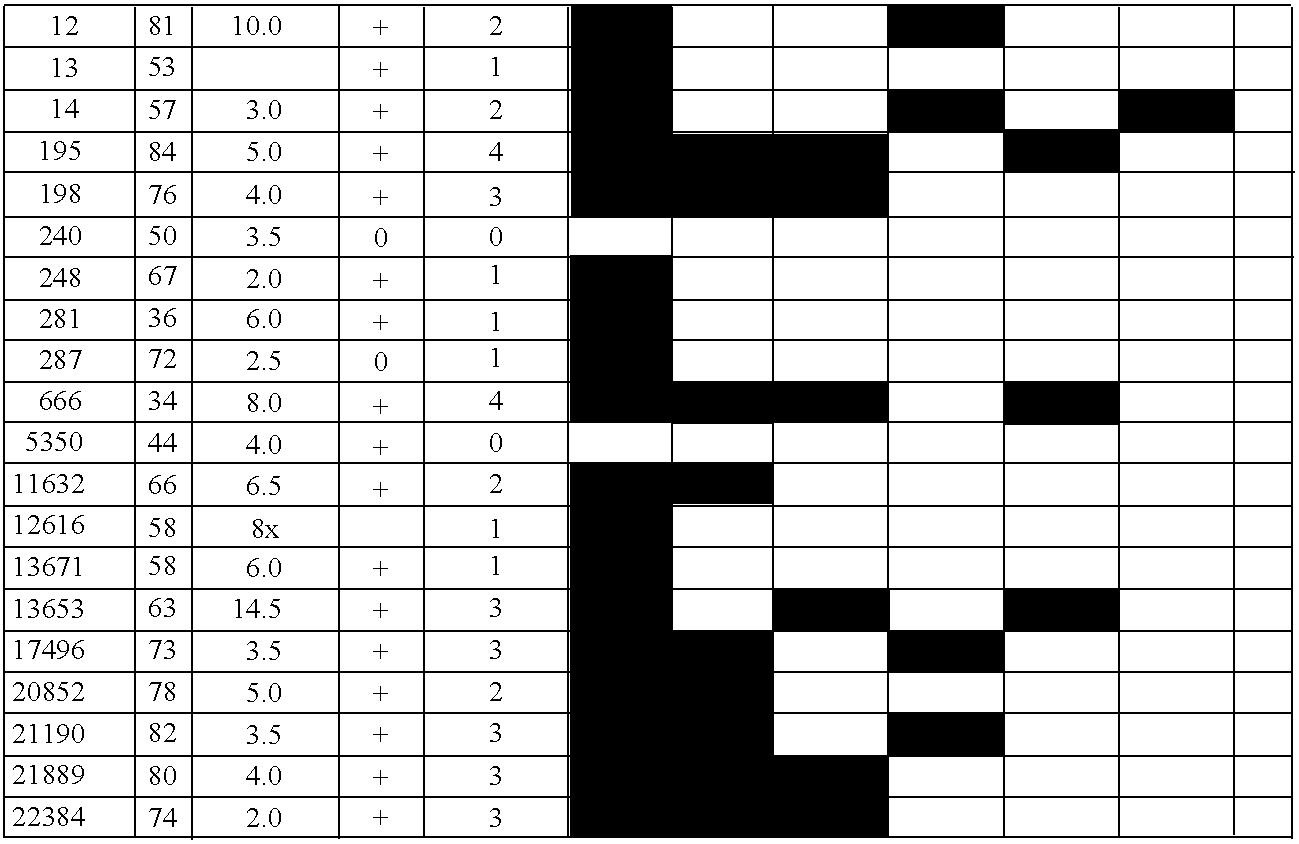Differentially methylated sequences in pancreatic cancer
a differential methylation and pancreatic cancer technology, applied in the field of gene expression regulation, can solve the problems of not well understood whether this global aberrant methylation is global, unclear role of abnormal dna methylation in human tumorigenesis, and inability to fully understand the global aberrant methylation. , to achieve the effect of increasing the likelihood of finding genes methylated in a particular cancer, increasing the sensitivity and specificity of methylation detection, and increasing the likelihood o
- Summary
- Abstract
- Description
- Claims
- Application Information
AI Technical Summary
Benefits of technology
Problems solved by technology
Method used
Image
Examples
example 1
Collection and Preparation of Pancreatic Cell Lines
[0096]The following pancreatic adenocarcinoma cell lines were used: PL3 and PL8 (both CIMP-cell lines (CpG island methylator phenotype) were from Dr. Elizabeth Jaffe, John Hopkins University); CAPAN1, CAPAN2, Panc1, Hs766T, and MiaPaca2 (from the American Type Culture Collection, Rockville, Md.) and Colo357 (from the European Collection of Animal Cell Cultures, Salisbury, United Kingdom). In addition, seventeen pancreatic cancer xenografts were selected at random from a total of 90 xenografts, which were established from the primary carcinomas as described in Ueki, et al., Cancer Res., 60:1835–1839, 2000. Forty-seven primary pancreatic adenocarcinomas, 15 normal pancreata, 5 pancreata from patients with chronic pancreatitis, and a panel of normal tissues were obtained from the resected surgical specimens at The Johns Hopkins Medical Institutions, Baltimore, Md. Frozen tissues or paraffin-embedded tissues were microdissected to obtai...
example 2
Methylated CpG Island Amplification / Representational Difference Analysis (MCA / RDA)
[0097]MCA / RDA was performed as described by Toyota et al., Cancer Res., 59:2307–2312, 1999, modifying such procedure to increase the efficiency by digesting 5 μg of DNA with SmaI and XmaI (New England Biolabs). The restriction fragments were then ligated to RMCA adapter and amplified by PCR in 10 mM Tris-HCl (pH 8.3), 1.5 mM MgCl2, 50 mM KCl, 0.5 M betaine, 2% DMSO, 200 μM each deoxynucleotide triphosphate, 100 pmol of RMCA 24mer primer and 15 units of Taq polymerase (Life Technologies, Inc.) in a final reaction volume of 100 μl. The reaction mixture was then incubated at 72° C. for 5 min and at 95° C. for 3 min, and then subjected to 25 cycles of 1 min at 95° C. and 3 min at 77° C. followed by a final extension of 10 min at 77° C. Betaine was included in the PCR reaction to help amplify the methylated templates at a higher annealing temperature (77° C.). The combination of betaine and DMSO can uniform...
example 3
DNA Sequencing of Clones and Dot Blot Hybridization
[0098]The clones recovered from each cell line after MCA / RDA were amplified with T3 and T7 primers and then sequenced using KS primer as recommended by the manufacturer (Sequitherm Excel; Epicentre Technologies). To determine the methylation status of MCA / RDA MICPs in pancreatic cancer and normal pancreas, MICPs were screened by hybridizing them to a dot blot of MCA products of pancreatic cancers and normal pancreata. Plasmid DNA containing each independent clone was prepared and digested with SmaI. DNA fragments were recovered from agarose gel and used as a probe for dot blot hybridization. Aliquots (1 μl) of the mixture of 10×SSC and MCA products from the driver and from the tester (PL3 and PL8) both before and after each of the three rounds of RDA competitive hybridization / selective amplification were blotted onto nylon membranes in duplicate. Similarly, MCA products from six pancreatic cell lines (CAPAN1, CAPAN2, Panc1, Hs766T, ...
PUM
| Property | Measurement | Unit |
|---|---|---|
| temperature | aaaaa | aaaaa |
| temperatures | aaaaa | aaaaa |
| temperature | aaaaa | aaaaa |
Abstract
Description
Claims
Application Information
 Login to View More
Login to View More - R&D
- Intellectual Property
- Life Sciences
- Materials
- Tech Scout
- Unparalleled Data Quality
- Higher Quality Content
- 60% Fewer Hallucinations
Browse by: Latest US Patents, China's latest patents, Technical Efficacy Thesaurus, Application Domain, Technology Topic, Popular Technical Reports.
© 2025 PatSnap. All rights reserved.Legal|Privacy policy|Modern Slavery Act Transparency Statement|Sitemap|About US| Contact US: help@patsnap.com



